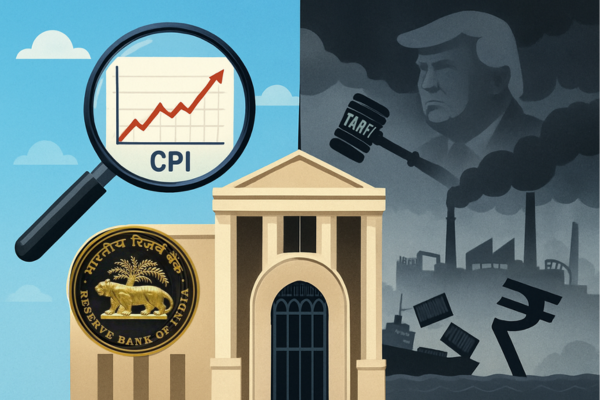.png)
August 6, 2025 at 1:33 PM IST
After delivering three back-to-back rate cuts in his first monetary policy moves, RBI Governor Sanjay Malhotra has opted to pause, signalling a shift from early assertiveness to cautious calibration. Malhotra’s first pause comes amid evolving macroeconomic dynamics: inflation has cooled sharply, but the central bank appears increasingly wary of oversteering.
Malhotra began his tenure as Reserve Bank of India Governor with a repo rate cut. Both of his predecessors, Urjit Patel and Shaktikanta Das, had started their terms with the benchmark rate at 6.50% and ended at the same level. For Malhotra, the score so far is 100 bps cut and a pause.
Inflation Drops, But RBI Grows Wary
In June, inflation cooled dramatically to 2.1%, its lowest in over six years, giving rise to market hopes of further rate cuts. But those expectations have since been tempered.
The central bank’s latest projections peg headline inflation closer to 5% next year, largely driven by base effects. This tempers hopes of future rate cuts.
RBI Banks on Festive Season to Revive Growth
Despite the easing seen earlier this year, credit growth remains sluggish, hovering around 10%. With investment appetite still tepid and consumer sentiment mixed, the RBI is now counting on the upcoming festive season, and a good monsoon, to revive demand. The central bank is hoping that higher rural incomes and festive spending will breathe some life into both the broader economy and bank credit.
Trade Tensions Rise, But Growth Forecast Holds
Even as trade tensions with the United States escalate—triggered by fresh tariffs and threats of energy surcharges, the RBI has chosen not to ring any alarm bells.
The central bank has kept its GDP growth forecast for 2025–26 unchanged at 6.5%, projecting confidence in India’s domestic buffers and resilience despite global uncertainty.
Liquidity Stays Loose to Aid Transmission
On the liquidity front, the RBI continues to maintain an agile stance. System liquidity remains in surplus, and the central bank has reiterated its intent to ensure adequate flow in the financial system. The goal is clear: make sure that the effects of past rate cuts are transmitted smoothly through banks into the real economy. After all, a cut on paper means little if it doesn’t reflect in lending rates on the ground.




